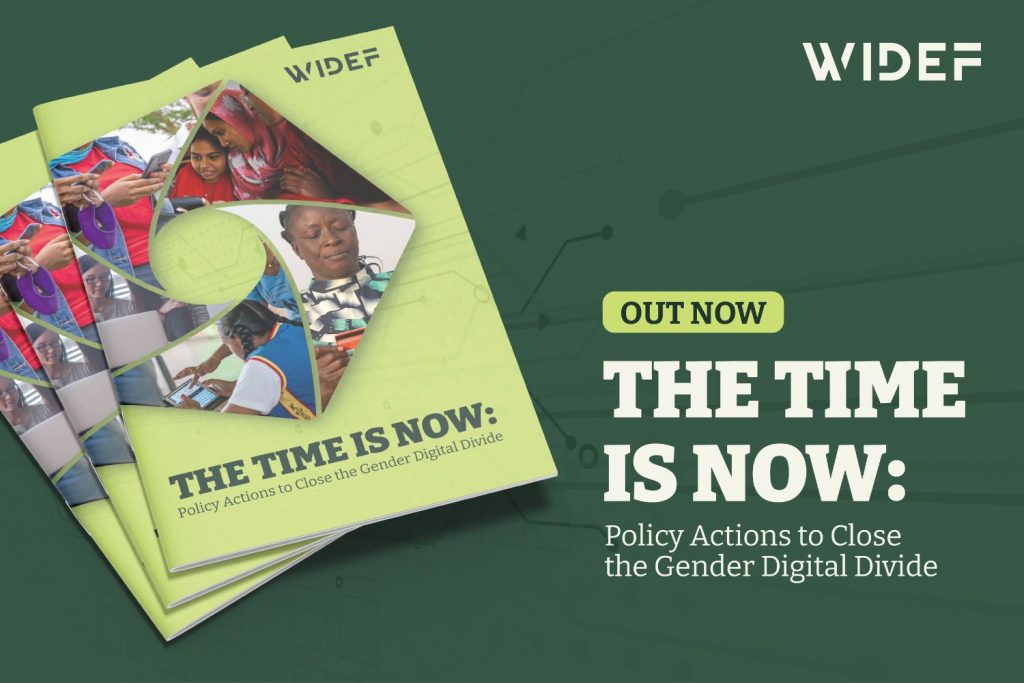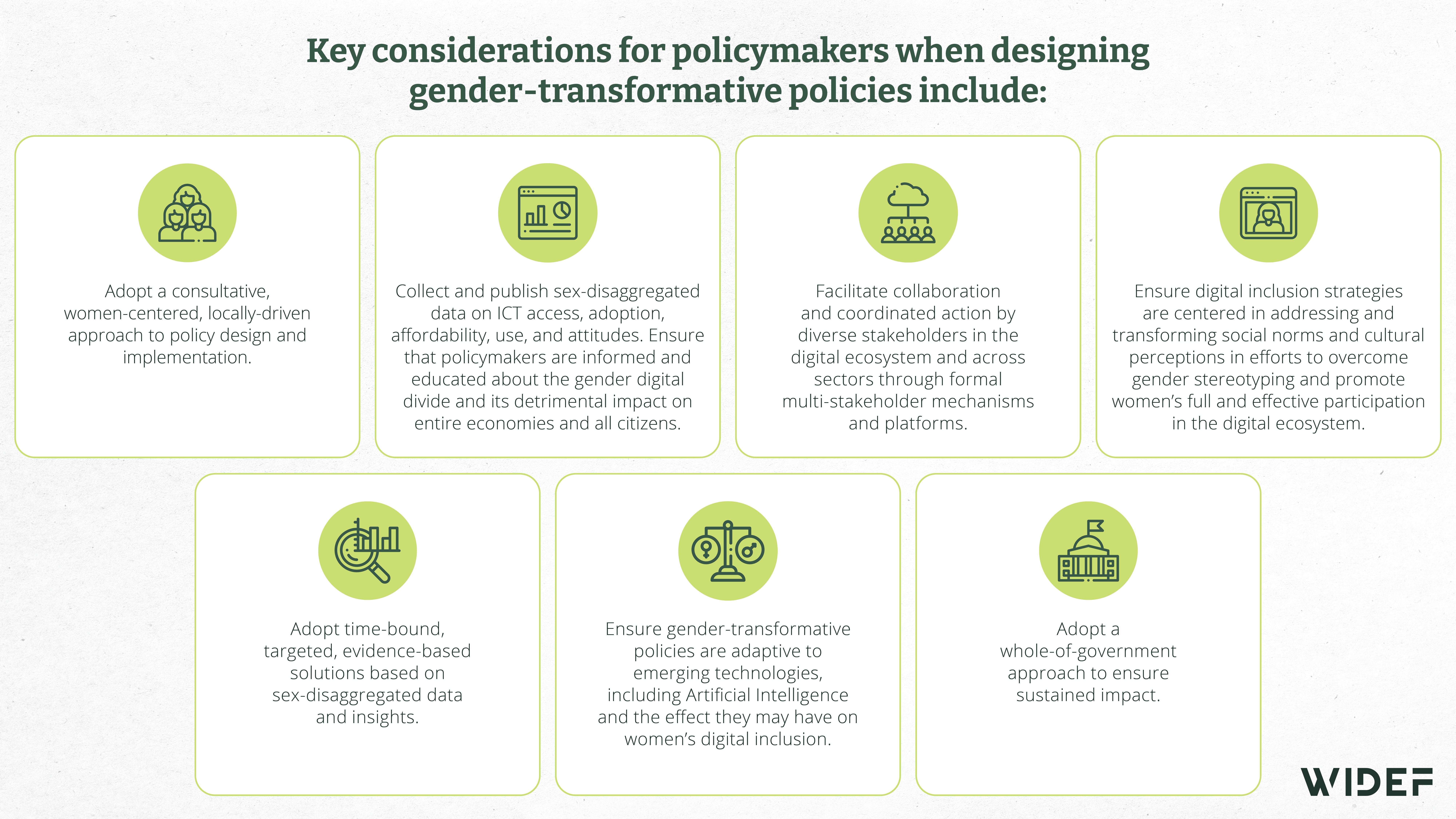As world leaders gathered in New York and adopted the eagerly anticipated United Nations’ Pact of the Future and the Global Digital Compact, there is no better time to spotlight women’s digital participation.
The Women in the Digital Economy Fund convened high-level stakeholders on the margins of the Summit of the Future to launch WiDEF’s inaugural policy impact report, “The Time is Now: Policy Actions to Close the Gender Digital Divide”.

It’s no secret that ensuring all women and girls have equitable, affordable access to digital technology spurs economic growth, improves development outcomes, and has the power to lift millions out of poverty. Yet many barriers to connecting women with technology pose constant challenges for women and girls, particularly in low- and middle-income countries (LMICs), exacerbating the gender digital divide.
The internet has the power to transform livelihoods, increase economic security, and build resilience, especially for women in marginalized communities. Despite the fact that the internet is inherently an open, non-exclusive, and decentralized technology, globally, there remains an entrenched and significant gender digital divide, with 244 million more men than women using the internet in 2023 (ITU, 2023).
The Women in Digital Economy Fund’s (WiDEF’s) steadfast commitment and motivation to addressing the gender digital divide is focused on building an evidence base to inform policy and practice, supporting the scaling of evidence-based solutions, and facilitating partnerships to achieve these aims.
From the report, policymakers can expect to glean actionable steps on how to design for women’s inclusion to foster women’s meaningful participation in the digital economy. As the digital world rapidly evolves and emerging technologies become a part of our everyday lives, closing this divide is crucial to achieving equitable economic growth and ensuring that, in particular, women and girls in LMICs are not left behind.

Featuring illustrative examples from across multiple regions at varying stages of implementation, this piece spotlights ‘promising practices’ for decision-makers to learn from diverse approaches taken across Africa, Asia, and Latin America. These examples encourage consideration of how such policies and initiatives may be customized to local contexts and aim to inspire policymakers to take immediate action.
The report also offers seven key considerations for developing gender-transformative policies. It underscores the need for dedicated political will, leadership, committed resources, and cross-sector collaboration to build inclusive digital ecosystems. By adopting gender-transformative policies, we can create a future where everyone, regardless of gender, has the opportunity to thrive in the digital age.
About WiDEF
The Women in the Digital Economy Fund (WiDEF) is a joint effort between USAID and the Bill & Melinda Gates Foundation to accelerate progress on closing the gender digital divide. WiDEF identifies, directly funds, and accelerates investment in proven solutions to close the gender digital divide, improving women’s livelihoods, economic security, and resilience. WiDEF is managed by CARE, the Global Digital Inclusion Partnership, and the GSMA Foundation.
About GDIP
The Global Digital Inclusion Partnership is a coalition of public, private, and civil society organizations working to bring internet connectivity to the global majority and ensure everyone is meaningfully connected by 2030. GDIP advances digital opportunities to empower and support people’s lives and agency, leading to inclusive digital societies.